Unarchived
Hayley Gray, Elad Tzadok
2022
| 1 h 24 m
Documentary
English with French sub-titles
Awards and Festivals
Official SelectionAvailable Light Film Festival, Whitehorse, Canada (2023)
Official SelectionVancouver International Film Festival, Canada (2022)
A National Film Board of Canada production
“The past is never dead. It’s not even past.” – William Faulkner
In the new feature documentary Unarchived, co-directors Hayley Gray and Elad Tzadok highlight community archives across British Columbia to reveal some of what has been erased from the official record.
Local knowledge keepers are hand-fashioning a more inclusive history through family photos, newspaper articles and scratchy old VHS tapes. These different collections tell stories of people building connection through work, play, protest, family and tradition.
Through a collage of personal interviews, archival footage and deeply rooted memories, the past, present and future come together, fighting for a space where everyone is seen and everyone belongs. History is what we all make of it.
One-liner
In community archives across British Columbia, local knowledge keepers are fighting for a more inclusive history through family photos, newspaper articles and deeply rooted memories.
Two-liner
In community archives across British Columbia, local knowledge keepers are hand-fashioning a more inclusive history. Through a collage of personal interviews, archival footage and deeply rooted memories, the past, present and future come together, fighting for a space where everyone is seen and everyone belongs. History is what we all make of it.
LONG SYNOPSIS
“The past is never dead. It’s not even past.” – William Faulkner
In the new feature documentary Unarchived, co-directors Hayley Gray and Elad Tzadok highlight community archives across British Columbia to reveal some of what has been erased from the official record.
The people and places left out of traditional archives and museums are often determined by the dominant power, but as UBC’s Dr. Henry Yu states, “the process of silencing makes a lot of noise.” Local knowledge keepers are undoing these omissions and hand-fashioning a more inclusive history through family photos, newspaper articles and scratchy old VHS tapes.
Ron Dutton started the BC Gay and Lesbian Archive by collecting protest pamphlets, posters and even cabaret sets from the earliest days of Vancouver’s gay community. In the tiny mill town of Paldi, on Vancouver Island, a remarkable intercultural community was captured on Super 8 and 16-millimetre film by the founders and their families. On the landscape, anthropologist Dr. Imogene Lim points out how plants serve as reminders of Asian communities long gone.
These different archives tell stories of people building connection through work, play, protest, family and tradition. In so doing, they challenge larger institutions to re-examine and address older narratives that no longer reflect the totality of our shared experience. At the Trans Archive at the University of Victoria, a hidden past is documented and preserved. At the Royal BC Museum, staff work tirelessly to right historical wrongs and find a new path towards restorative justice for Indigenous people.
Through a collage of personal interviews, archival images and footage, and deeply rooted memories, the past, present and future come together, fighting for a space where everyone is seen and everyone belongs. History is what we all make of it.
Poster
Contact NFB publicist for high-resolution poster for print.
Trailer
Excerpts
No one was doing the filing
Our stories need to be kept
INTERVIEW WITH FILMMAKERS HAYLEY GRAY AND ELAD TZADOK
What were some of the biggest surprises that you discovered about the history of British Columbia as you were making the film?
Over and over again, we were floored not only by what we didn’t know but by how difficult it was to research these stories. With so much at our fingertips, it was mind-bending to note how many amazing pieces of our collective history are known only within individual communities.
It makes you realize how the dominant narrative is just one story, one opinion or just one thing that happened out of a plurality of voices. BC has had so many different communities, different moments, different stories. It makes you realize how vital these community-led archives and museums really are in terms of retaining these narratives and making them accessible to the public.
Can you talk about the approach you took during the making of the film to create safe spaces for people to tell their stories?
This was a big piece of our work, right from the inception of Unarchived. We started with 20 stories from all across the province and landed on four. These four stories were from communities who were able to speak about their work publicly and safely. They were communities who had something they wanted to share on a platform and who were interested in collaborating when it came to talking about the intersection of how their histories connected and interwove with the larger picture.
When we landed on our stories and subjects, we then wanted to make sure our crew were reflective of the stories we were telling. We wanted everybody on board to be invested in what we were doing. Thus, all of the shooting crew we brought on were from the communities we were building our film with.
Taking the time to build connection in our development phase was paramount; we wanted to know what stories our subjects were interested in and how to work with them to best facilitate their stories.
Lastly, location. It was incredibly important for us to connect with our subjects in places where they felt ownership, ease and a sense of home. Sometimes this was their actual home, the institute they founded or literally a ditch where they harvest flora from their ancestral lands. When we filmed our subjects in these spaces, we watched them light up and bring their histories to life.
Many of the people interviewed took it upon themselves to document their own communities, after being largely excised or erased from the official records. Is there still more history yet to be uncovered?
OMG, yes! And this is by no means an exhaustive list. History is constantly happening and even as our media landscape becomes pluralized, so many communities and stories are still missed. These four communities are only a small slice of the populace of our province. We hope that they will serve as a starting point for people to examine the history around them, and we hope they will lead the way as examples of how this work ought to be done.
In creating more equitable, inclusive and inviting spaces, what role can traditional archives, museums and universities play?
Despite making a movie about this for the past four years, we don’t think we have a simple answer. Different bodies and institutions will be different things for different people. And the industry as a whole is going through a major tectonic shift in terms of its understanding of the impact it has and the damage it can cause. One thing we can say for certain, though, through our conversations with people on every level of this work: the consensus seems to be that the role these places should play is to hold space, support and help facilitate communities telling their own stories, in their own voice, the way they see fit.
How can these larger institutions better support community archives?
A big piece of this is financial. If we continue to underfund community archives and museums, we will continue to see a dichotomy in access. Additionally, and perhaps even more importantly, we can’t have various communities pinned up against each other fighting over the same pool of ‘diverse’ funding. It segregates and limits access. Both these forms of funding are often one-offs and leave the institutions spending so much time trying to keep the lights on while trying to keep up with the work.
Another big piece is, again, support and autonomy. We have seen how building community history projects can work within institutions: the South Asian Studies Institute working with the University of the Fraser Valley, or the Trans Archives existing in the University of Victoria. But within that, there must be agency and autonomy for these organizations to truly be representative.
How does recovering and actively contending with the hidden parts of the past enable communities to move forward in new and different ways?
Wow, what a big question. In our experience, it shifts and reveals a core understanding of what history is. When you get to understand that the history of Paldi is just as important and influential as any European-founded town, suddenly history feels like it is about everyone. And it reveals, in this tactile way, how we’ve been perpetuating a very limited experience. It’s like the Wizard of Oz: you think of history as this huge, ever-amassing institution, but then slowly see the man behind the curtain, the small group that has been holding up a very simple and self-serving narrative as the whole and only truth.
Although many community archives have been documenting their own history for many years, some of these narratives are just now being discovered and shared with a wider audience. How does this change our sense of history and identity?
Let’s not use the word ‘discovered.’ These histories are now more shareable and more accessible, and that is huge. Large digitization efforts that have gone on in so many of these spaces mean that these slices of our past move into a larger collective memory, and that they are searchable. Now, if you want to know about the South Asian pioneer experience, it is accessible to you, you can see photos, videos and interviews. When these exist on an accessible platform, it allows us all to challenge old colonial ideas of Canada and the world.
In this expanded and more inclusive sense of history, what can we learn about ourselves?
We learn that marginalized and racialized communities built Canada not in collaboration with the state but, honestly, in spite of the state’s efforts to tear them down. We learn that these communities did not exist in silos but have been building each other in solitary since long before BC was BC. But perhaps the most important thing we’ve learned is that if we want to end racism and decolonialize ourselves, we NEED to build a past that is diverse, inclusive and pluralist, and that holds our country and institutions accountable.
Images
Loading...
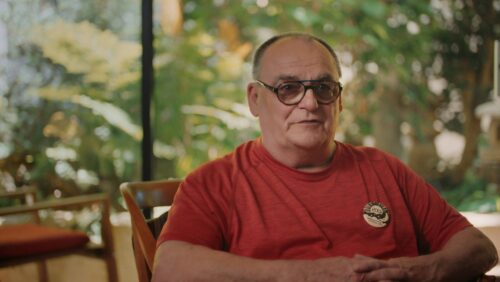
Download
Loading...
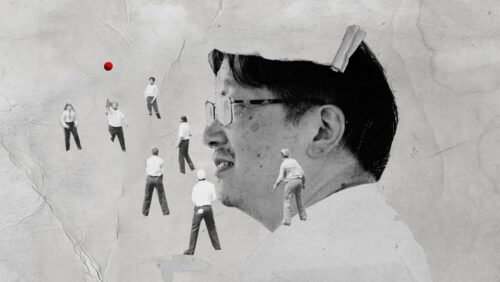
Download
Loading...

Download
Loading...

Download
Loading...
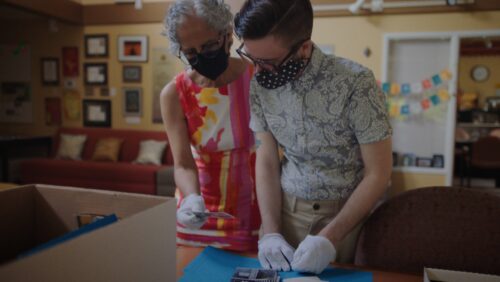
Download
Loading...
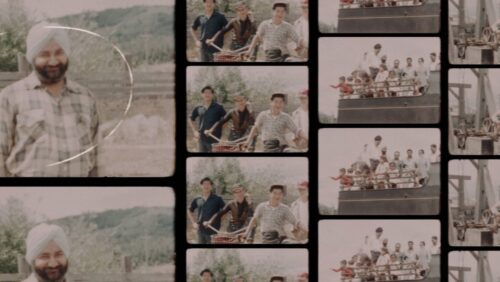
Download
Loading...
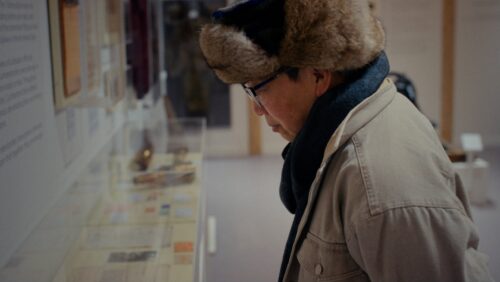
Download
Loading...
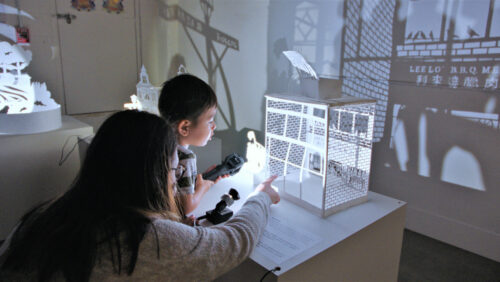
Download
Loading...
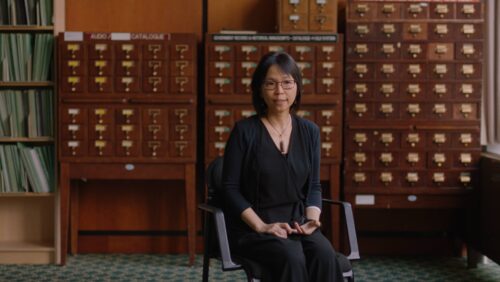
Download
Loading...
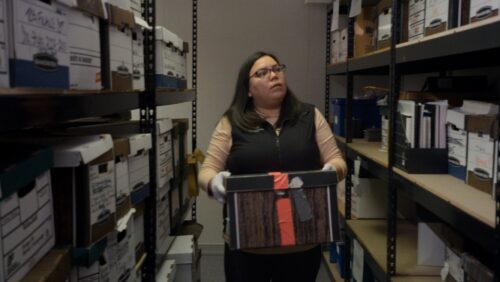
Download
Loading...
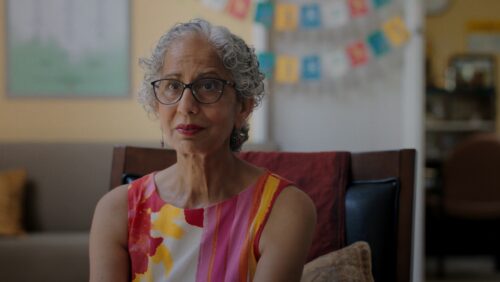
Download
Loading...
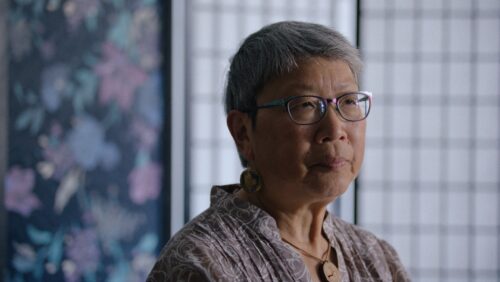
Download
Loading...
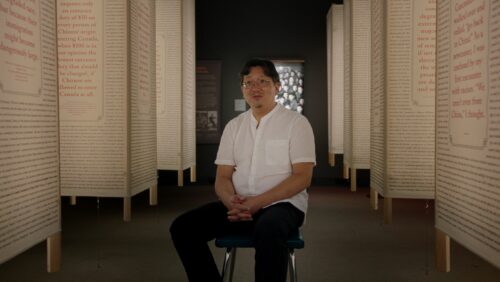
Download
Loading...
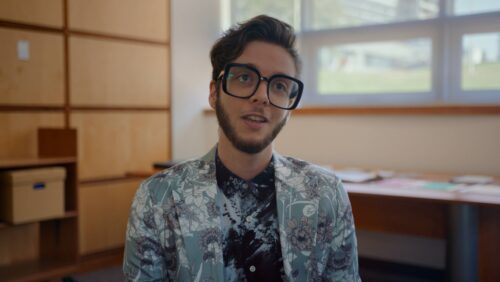
Download
Contact NFB publicist for high-resolution images for print.
Team
Hayley Gray
Director
Photo
Photo : Kristine Cofsky
Elad Tzadok
Director
Photo
Photo : Collin Morrison
Teri Snelgrove
Producer
Photo
Photo : NFB
Shirley Vercruysse
Executive Producer
Photo
Photo : Emily Cooper
Credits
Written and Directed by
Hayley Gray & Elad Tzadok
Producer
Teri Snelgrove
Line Producer
Jennifer Roworth
Director of Photography
Kaayla Whachell
Editor
Aynsley Baldwin
Elad Tzadok
Composer
Edo Van Breemen and Johannes Winkler
Sound Recordist
Ramsay Bourquin
Alex Shamku
2nd Unit DOP
Michael Bourquin
Additional Photography
Michael Bourquin
Alfonso Chin
Camera Operator
Elad Tzadok
Hayley Gray
Grip
Chris Vautour
Production Coordinator
Nathan Conchie
Jas Calcitas
Production Assistant
Joss Arnott
Lead Researcher
Caroline Coutts
Researcher
Lanna Lucas
Hân Phạm
Assistant Editor
Holly Pavlik
Title & Motion Graphics Designer
Sterling Larose
Sound Designer
Humberto Corte
Re-Recording Mixer
May Guimarães
Technical Coordinator
Wes Machnikowski
Dialogue Editor
Miguel Araujo
Elan Gabriel
Backgrounds Editor
James Neves
Colourist
Dave Tomiak
Online Editor
Ryan Mance
With the Participation of
Dr. Satwinder Kaur Bains
Magnus Berg
Dr. Tzu-I Chung
Dr. Aaron Devor
Ron Dutton
Kathryn Gagnon
Heather Gordon
Dr. Imogene Lim
Sandra Marion
Joan Mayo
Lou-ann Neel
Dan Pon
Grace Wong
Genevieve Weber
Henry Yu
And
Michael Abe
Ursula Abramczyk
Sherri Brubaker
Ezzie, DJ and Rachel
Alan Lowe
Davinder Mayo
Robin Mayo
Chad Norman Day
Namar Parnar
Dick Yano
Thank-you
Aimee Greenaway
Bamboo Village
City of Abbotsford
City of Duncan
City of Nanaimo
City of Vancouver Archives
City of Victoria
Chinese Canadian Museum
Cowichan Valley Museum & Archives
The community of Paldi
Cumberland Museum & Archives
Dovehill House
Don Hann
Erik Lambertson
Glenn Alteen
grunt gallery
Gur Sikh Temple
Gus Gus
Harbour Air Seaplanes
Ian Su
Jack Fox
Janine Steele
Jasmine Pullukat
Jill Sharpe
Kelly-Ann Turkington
Vikki Drummond Art
Kira Baker
Lara Wilson
Laura Cuthbert
Len Cousineau
Lia Tarle
Little Sister’s Book & Art Emporium
Megan Lau
Museum of Vancouver
Nanaimo Museum
Paldi Sikh Temple
Richard Banner
Royal BC Museum
Rosslyn Shipp
Sandy Lambert
Selwyn Jacob
South Asian Studies Institute
Tahltan Central Government
Thamilini Jothilingam
Tandoori Junction Indian Cuisine
University of the Fraser Valley
University of Victoria Libraries
Vancouver Board of Parks and Recreation
Vanessa Kwan
Victoria Ranea
Wesley Macinnis
Archival
1181 Lounge: Todd Hoye
Andre Tardif
BCTV
Carolina Kroon
CBC Archive Sales
CBC Licensing
CHEK Media Group
City of Vancouver Archives
COGO Productions
The Cowichan Historical Society
Cowichan Valley Museum & Archives
Canadian Press / Chad Hipolito
Cumberland Museum & Archives
Daily Hive
Demian Petryshyn
Don Hann
Emma Djwa
Froglady Video Productions
Global News
grunt gallery
Helene Littmann
Henri Robideau
Imogene Lim
Imtiaz Popat
Jana Grazely
Jennifer Gauthier
Joan Mayo & the Mayo family
John Kozachenko
Karen Duthie, Diana Wilson
Kiss and Tell: Emma Kivisild / Persimmon Blackbridge / Susan Stewart
Laiwan
Merle Addison
Out On Screen Film and Video Society
Richard Banner
Robert Pogue
Robin Metcalfe
Ron Dutton
Royal BC Museum and Archives
Sandra Thomas / Dan Toulgoet / Glacier Media Group
Scopitone Films
Shaw Communications Inc. / Jim Reis
South Asian Studies Institute
Trevor Jansen / Shauna Sylvester
Ubiq Broadcasting Corp.
Vancouver Men’s Chorus
Violetta Kryak
Vtape.org Distribution
Attribution
Bloomberg, This Canadian City Is The Anti-Asian Hate Crime Capital of North America, Bloomberg Quicktake: Now, May 15, 2021
CBC, More than half of Asian Canadians experienced discrimination in past year: survey, Jon Hernandez, June 8, 2021
CTV News, Sir John A. Macdonald statue toppled and beheaded in Montreal at protest, CTV News, August 30, 2020
Footage of Premier John Horgan Copyright © 2021, Province of British Columbia
Footage from “Prism TV” courtesy of Shaw Communications Inc. (Jim Reis)
Frank Lennon / Toronto Star via Getty Images
Global News
Dive crews retrieve James Cook statue statue from Victoria Harbour, Global News, July 2, 2021
Conservatives urge Manitoba to restore fallen statues of Queen Elizabeth, Queen Victoria, Abigail Turner, July 6, 2021
New study shows extent of anti-Asian racism in Canada, Kamil Karamali, March 23, 2021
Sir John A. Macdonald statue removed from Victoria City Hall, Global News, August 11, 2018
Holmes (Burton) Films Inc, Prelinger Archives
McCord Museum, Wet Collodion Negative, William Notman, 1864
Montreal City News, Montrealer verbally attacked with anti-Asian remarks at grocery store, Montreal City News, January 6, 2022
NBC, Freaks and Geeks – Season 1, February 9, 2021
New Westminster Museum & Archives, Accession Number: IHP10001-1436
Senator Victor Oh, Harper Government Issues Full Apology For Chinese Head Tax and Chinese Exclusion Act, June 22, 2006
Simon Fraser University
Digital Collection, Special Collections and Rare Books
IKhalsa Diwan organizers courtesy of the Kohaly Collection
Sikh Logging_001 courtesy of the Komagata Maru: Continuing the Journey Digital Collection
Stock Media provided by 6@PublicDomain / Pond5
Storyful
Queen Victoria Statue Toppled Outside Manitoba Legislature on Canada Day, Lúcia Rios, July 2, 2021
Sir John A. Macdonald statue toppled and beheaded in Montreal at protest, Kamissa Ma Koita, August 30, 2020
The Guardian, Attacks make Vancouver ‘anti-Asian hate crime capital of North America’, Johna Baylon and Leyland Cecco, May 23, 2021
The Province, a division of Postmedia Network Inc.
The Reach Gallery Museum
Accession Number: DM0623, DM15822_001, P11927, P11843
The Vancouver Sun, a division of Postmedia Network Inc.
The WB, Beverly Hills 90210 – Season 1, August 4, 2011
The WB, Dawson’s Creek – Season 3 Episode 23, November 4, 2020
TikTok, @childrenfirstsociety, Canada Day 2021, November 24, 2021
Toronto City News
Anti-Asian hate attacks on the rise, Toronto City News, March 19, 2021
Anti-mask rant turns into racist tirade inside Mississauga grocery store, News Staff, July 8, 2020
Canada seeing an increase in racist attacks against Asians, Xiaoli Li, May 5, 2020
Twitter, @siiamhamilton, Captain James Cook statue in Victoria, BC. This was moments before his body was sunk in the Salish Sea by Nuu Chah Nulth Youth and friends. The city of Victoria should remove all monuments that celebrate settler colonialism. NO PRIDE IN GENOCIDE!, Sii-am Hamilton, July 1, 2021
University of California, California Notebook: Bancroft Library, May 10, 1952
Vancouver Public Library
Accession Number: 13157, 16639
Vancouver Sun / Vancouver Province, a division of Postmedia Network Inc.
Music
“Racist, Sexist Boy”
Performed by The Linda Lindas
Written and Published by Lucia Elizabeth de la Garza, Mila Alice de La Garza, Isabela Rene Salazar, Eloise Alice Wong
Courtesy of Epitaph
“Hot Magazine”
Written by Richard Dworkin
Performed by Buena Vista
Courtesy of Chapter Music
By arrangement with Terrorbird Media
“Home (Pt.3)”
Performed by Missy D
Written by Missy D
Produced by David Tallarico
Published by Missy D
“I Want More”
Written by Holger Czukay, Irmin Schmidt, Jaki Liebezeit, Michael Karoli and Peter Gilmour
Published by Messer Music Group admin by Bucks Music Group and Red Brick
Performed by CAN
Recording Courtesy of Bucks Music Group LTD
www.spoonrecords.com
Marketing Manager
Kay Rondonneau
Marketing Coordinator
Julie Fortin
Publicist
Katja De Bock
Studio Administrator
Carla Jones
Executive Producer
Shirley Vercruysse
Filmed on the unceded Indigenous territories of
the xʷməθkwəy̓əm, Skwxwú7mesh, Stó:lō, Səl̓ílwətaʔ/Selilwitulh, WSÁNEĆ, Lkwungen, Wyomilth, Cowichan, Ts’uubaa-asatx, K’omoks, Stz’uminus, Hul’qumi’num, Snuneymuxw, Dënéndeh, Tāłtān Konelīne, Quw’utsun, Liǧʷiłdax̌ʷ, K’ómoks, We Wai Kum, and ɬaʔamɩn gɩǰɛ peoples
©2022 A Production of National Film Board of Canada.
Media Relations
-
About the NFB
For more than 80 years, the National Film Board of Canada (NFB) has produced, distributed and preserved those stories, which now form a vast audiovisual collection—an important part of our cultural heritage that represents all Canadians.
To tell these stories, the NFB works with filmmakers of all ages and backgrounds, from across the country. It harnesses their creativity to produce relevant and groundbreaking content for curious, engaged and diverse audiences. The NFB also collaborates with industry experts to foster innovation in every aspect of storytelling, from formats to distribution models.
Every year, another 50 or so powerful new animated and documentary films are added to the NFB’s extensive collection of more than 14,000 titles, half of which are available to watch for free on nfb.ca.
Through its mandate, its stature and its productions, the NFB contributes to Canada’s cultural identity and is helping to build the Canada of tomorrow.